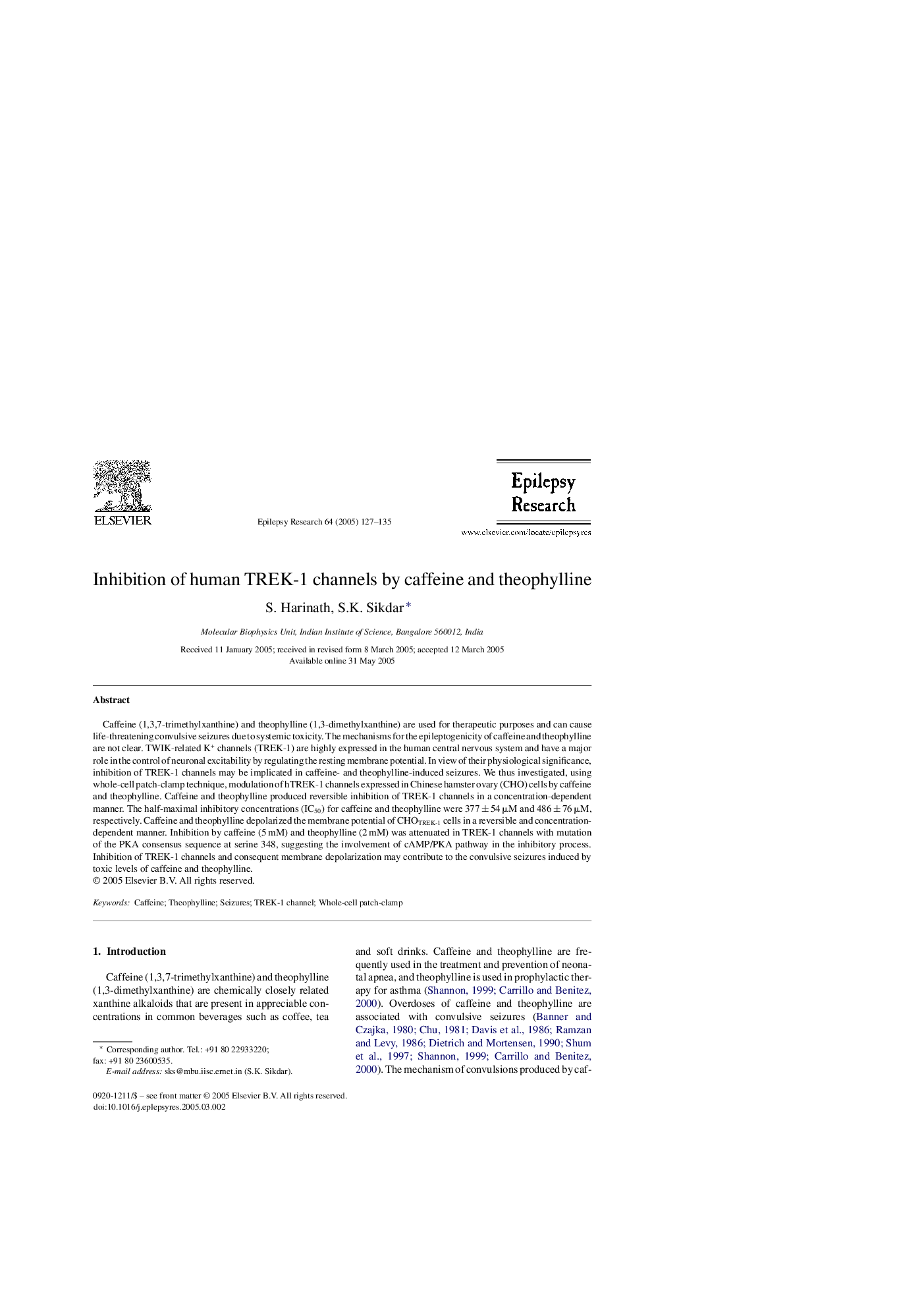| Article ID | Journal | Published Year | Pages | File Type |
|---|---|---|---|---|
| 9191273 | Epilepsy Research | 2005 | 9 Pages |
Abstract
Caffeine (1,3,7-trimethylxanthine) and theophylline (1,3-dimethylxanthine) are used for therapeutic purposes and can cause life-threatening convulsive seizures due to systemic toxicity. The mechanisms for the epileptogenicity of caffeine and theophylline are not clear. TWIK-related K+ channels (TREK-1) are highly expressed in the human central nervous system and have a major role in the control of neuronal excitability by regulating the resting membrane potential. In view of their physiological significance, inhibition of TREK-1 channels may be implicated in caffeine- and theophylline-induced seizures. We thus investigated, using whole-cell patch-clamp technique, modulation of hTREK-1 channels expressed in Chinese hamster ovary (CHO) cells by caffeine and theophylline. Caffeine and theophylline produced reversible inhibition of TREK-1 channels in a concentration-dependent manner. The half-maximal inhibitory concentrations (IC50) for caffeine and theophylline were 377 ± 54 μM and 486 ± 76 μM, respectively. Caffeine and theophylline depolarized the membrane potential of CHOTREK-1 cells in a reversible and concentration-dependent manner. Inhibition by caffeine (5 mM) and theophylline (2 mM) was attenuated in TREK-1 channels with mutation of the PKA consensus sequence at serine 348, suggesting the involvement of cAMP/PKA pathway in the inhibitory process. Inhibition of TREK-1 channels and consequent membrane depolarization may contribute to the convulsive seizures induced by toxic levels of caffeine and theophylline.
Related Topics
Life Sciences
Neuroscience
Neurology
Authors
S. Harinath, S.K. Sikdar,
